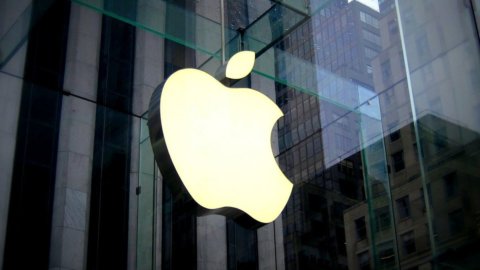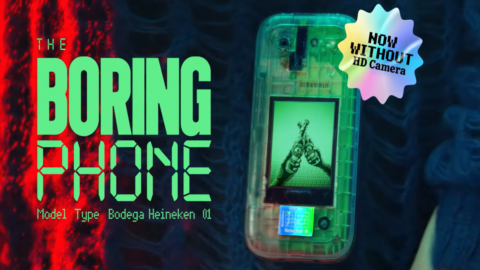Almost 15 years ago the iPhone started the smartphone revolution. Today, Apple is putting the pieces together for what it hopes will be the next "iPhone effect." He is working on a viewer that can make the artificial and real worlds interact. Surely it will be the Apple Glasses, which are being talked about more and more insistently also in Cupertino, ad paving the way for Apple to the Metaverse.
According to a report released this week by Citi Research, the economic potential of the mataverse, in its broadest definition, will be $13 trillion by the end of the decade. A figure slightly lower than the GDP of the United States.
If we include in the term metaverse all the future paths that could be taken by the Internet and by every person, company and institution that relates to it, this figure could also fit.
Hollywood model
Apple's metaverse content will look more like that of a futuristic Hollywood production than the Avatars and silicone environments with which Silicon Valley seems to have fallen in love. It will spring from the creativity and hyper-realistic models of the large-scale production of the film industry for which, as has always been the case at Apple, technology and engineering will be at their service. Not vice versa.
According to reports from the "New York Times", which has reached sources familiar with the work being done at Apple, the company has commissioned Hollywood directors such as Jon Favreau, which already works with Apple TV, to develop video content for its headset, which the paper says will be available as early as next year.
At its annual global developer conference a week ago, Apple showed off new software tools that will allow developers to add new voice and visual capabilities to apps, which can also run on glasses.
Cupertino is working on this new device according to the classic scheme applied to all its successful products, that is to closely integrate hardware, software and content.
Metaverse and virtual reality: a competition between FANG
Apple is entering the competition to define the future of virtual reality. Microsoft, Google, and Facebook's parent company Meta are currently in multiple stages of software and hardware development to create environments for people to coexist and interact in. three-dimensional virtual reality and physical world.
Last year, Meta CEO Mark Zuckerberg reframed Facebook's strategy around the concept of the metaverse.
Zuckerberg believes the metaverse is capable of igniting a new revolution that could succeed the smartphone era dominated by Apple's iOS and Google's Android software, just as these platforms followed the decades dominated by Windows and the Macintosh.
The next frontier
Carolina Milanesi, an analyst at Creative Strategies, a research firm in the field of new technologies, said:
“This is the next frontier. For Apple, this is a new experience and an opportunity to engage consumers with a device and new experiences that build on what they have created with content, for example, on Apple TV+.
The development of content and software tools for virtual reality on Apple's part is essential to create experiences that give a definite meaning to its future device.
The latest major new product, theApple Watch, launched with around 3.000 apps, but struggled to take off because only a few of these apps appeared to be useful to consumers.
Similar problems afflicted Quest, Meta's virtual reality headset, which surpassed 10 million units sold last year. Many potential users tend to think of it as a gaming device.
Augmented reality, a frontier orbeyond video games
From the original Macintosh to the iPad, Apple has focused on products capable of attracting a wide range of potential customers thanks to their multiple uses.
Apple is estimated to have sold last year 240 millions of iPhone, which generated half of its $366 billion in total sales.
According to analysts, in order for Apple glasses to truly take over from the iPhone, they will have to have a utility that goes beyond the niche world of video games.
Tim Cook, Apple's CEO, has been talking about the potential of augmented reality for years. He told investors in 2016 that the company was investing heavily in this area and that he saw it as a "huge business opportunity."
There was a lot of talk on the Apple campus at the time about Apple's ability to create a virtual reality world in a reasonable time frame.
To this end, Apple has hired a Dolby Technologies engineer, Mike Rockwell, to lead the initiative. His first attempts to create an augmented reality product collided with the limited computing power that was able to mount on these devices. Other problems, such as battery life, have forced Apple to postpone its release.
The state of the art and concerns within the company
The augmented reality initiative has sparked lots of arguments and tearing up within Apple. At least two members of the industrial design team said they left the company over concerns about developing a product that could fundamentally change the way people interact with each other.
This feeling of concern has increased within the company following growing public concern about screen time among children and adolescents.
With Rockwell at the helm, the glasses would be the first product to come out of Apple conceived and built by the engineering team rather than its co-founder Steve Jobs and its former designer in chief, Jony Ive, who left the company in 2019 .
The Apple Watch project was led by Ive and his designers, who defined its appearance, function and marketing.
It is a great challenge that awaits the engineering team which at Apple has always been, in fact, employed by the team of designers.
The specificity of the Apple product
Favreau's call shows how Apple is trying to differentiate its proposal from that of Meta.
The Cupertino-based company is trying to activate the relationships it has cultivated in Hollywood since it launched Apple TV+ in 2019 and which have led to an Apple production winning the Oscar for best picture.
Matt Miesnieks, CEO of LivingCities.xyz, a start-up company working on metaverse technology, told the “New York Times: that
“A well-designed headset could offer a better experience than an 80-inch TV”. So there is not only virtual reality in Apple's proposal, but also a more advanced way of experiencing the realities of the physical world.
New software tools
The software tools that Apple has prepared and is preparing aim to encourage developers third-party to create apps for augmented reality, using the tools and libraries contained in the system software provided by Apple.
The company has already moved in this direction starting in 2017 with ARKit, a framework that allowed developers to use the iPhone's camera and motion sensors to place digital objects in the real world and allow people to interact with them .
And this is precisely the basic idea of Apple to integrate two-way between the real world and the virtual world to go beyond the isolation of the two worlds or their being alternatives.
A long way
From a survey conducted by Creative Strategies of more than 500 developers, it was learned that about 70% of Apple developers are not using this tool.
At the developer conference, the company unveiled yet another toolkit that offers developers new ways to enable advanced features and streamline existing practices for applications that use Siri and QR codes.
These are interactions that it will be possible to use in future glasses, which in fact constitute their most appropriate and natural channel of execution.
It is not known if Apple with these slim and glamorous glasses will be able to do what it did with the iPhone. UK bookmakers are already accepting bets.
Source
Mickle Tripp and Brian Apple Starts Connecting the Dots for Its Next Big Thing, "The New York Times," June 4, 2022
Mickle Tripp he is a Wall Street Journal reporter for which he covers Google and Alphabet. Previously for the same newspaper he had been the reporter at Apple. He recently published a book, at the top of the New York Times bestseller list, entitled After Steve: How Apple became a Trillion-Dollar Company and Lost Its Soul, HarperCollins, May 2022
Brian X Chen he is consumer technology writer of the “New York Times”. He reviews products and holds a regular column, Tech Fix, in which he discusses, from a technical point of view, the problems associated with technological products. Before joining The Times in 2011, he covered Apple's Wired magazine and the wireless industry. He lives in San Francisco.




